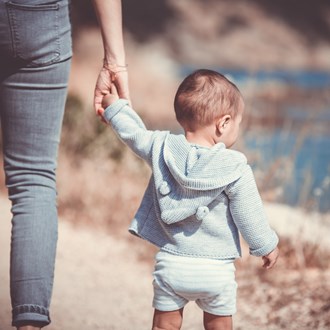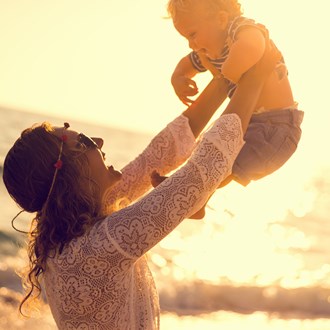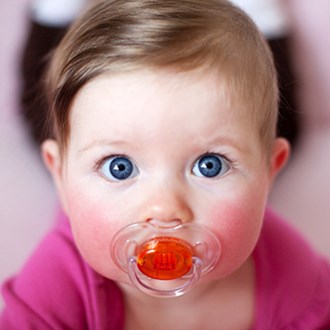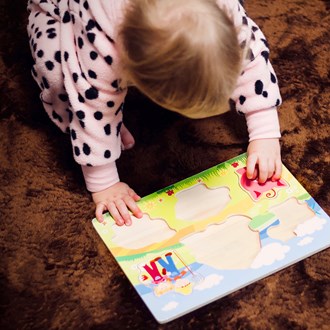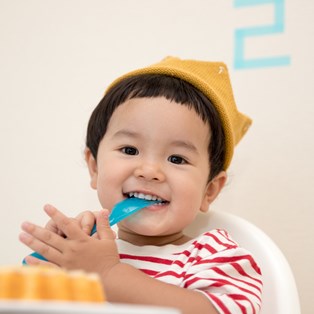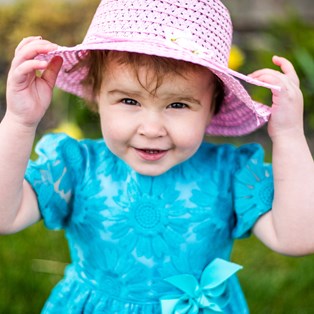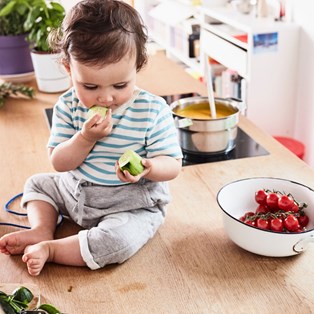Learning is fun for toddlers
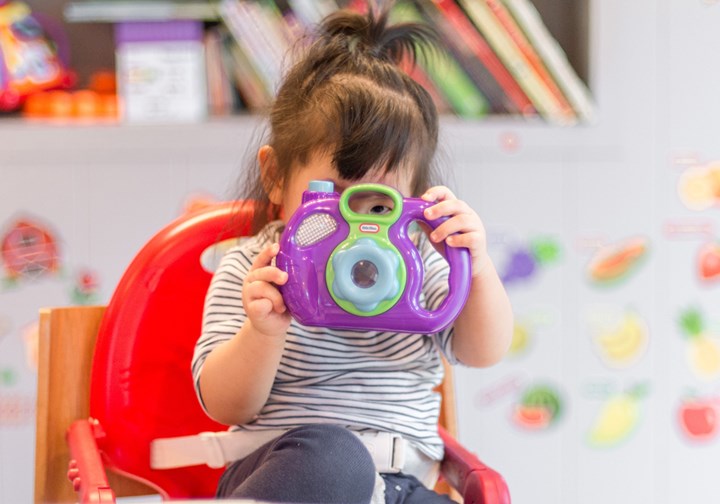
Fun, games and even TV have a lot to offer for your littlie’s learning and development
By Maria Van Carter
June 26 2018
There are toys scattered through the house, glitter covering the lounge and is that playdough on the wall?
It might look like a bomb’s hit, but this is actually the perfect learning environment for your toddler. “You can’t teach young children about the world by sitting them at a desk.
Kids need to explore and learn by looking at things, poking them, playing with them,” says childhood development expert Kathy Walker, founding director of Early Life Foundations.
In fact, all kinds of everyday things are encouraging your tot to learn. Here’s how.
PLAYTIME
Kids are programmed to play, explore and experiment! If there are toys your tot will interact with them, if there are blocks he’ll stack them, if there’s music he might boogie and if there’s nothing he’s likely to be led by his imagination and make up his own fun.
“We tend to see play as a cutesy thing kids do, but it’s actually critical,” says Kathy. “If children don’t play their language may lag, they aren’t creative and can’t self-entertain.”
Even more reason to ensure your tot has fun! Imaginative play is hugely important.
Pretending he’s on the phone, setting up a pretend shop for his toys or copying as you or your partner do the household chores are all ways your tot is rehearsing for real life. “He’s re-enacting things he’s seen and trying them out for himself,” says child psychologist Glynis Hannell.
“During this he’s refining his thinking, developing language and working on socialisation.”
Research shows this kind of play is also linked to the development of resilience and the beginnings of empathy. Children have to learn that not everyone thinks and feels the same as they do and it’s through pretending to be someone else that they start grasping other points of view.
Toys are great as props for this kind of play and also for specific development in things such as learning shapes and colours. But don’t expect all tots to have the same response to the same toy. “Children will all do different things, depending on their stage of development,” says Glynis. “While one child might put his toy to sleep in a toy bed, for example, another might use it as a magical flying spaceship.” It’s why playthings are so much fun for kids.
Play involving music and dance is also another area tots learn without knowing it. “It’s an opportunity for toddlers to learn to be attentive and responsive,” Glynis says. It’s also great for body coordination and gross motor skills, not to mention an ideal way to encourage physical activity. The pattern and repetition in music is an area where you’re actually laying the foundations for maths, too.
ARTS AND CRAFTS
Okay, so paint, crayons, glitter and glue sound like they’ll create a lot of mess, but your toddler will have a blast and the added benefit of craft time is that it’s a rich learning experience for him, too.
At this age it’s as much about the enjoyment of the process as the goal. He’ll love squelching the paint in his hands, sticking his fingers in the different materials and revelling in all the sensations he feels. “It’s a very physical, sensory experience for toddlers,” says Glynis. “They might not be absorbed in it for a long time, but that doesn’t mean they’re not learning as they go.”
In among all that paint and goo your tot is refining the muscles in his fingers, plus he’s working his fine motor control so he’ll soon be able to hold and control a pen. Playing with things such as playdough and plasticine means he’s learning cause and effect. He’s exercising his imaginative thinking as well, and there’s a chance to talk about colours and the things he’s creating, whether that’s animals, shapes or anything else.
Perhaps surprisingly, arts and crafts provide toddlers with a basic foundation to maths, too. “Research shows this kind of play builds awareness of shape, size and quantity, which is essential for mathematical thinking,” Glynis says. “Learning to distinguish a long piece of paper from a short one, for example, is the first step to understanding that one number is bigger than another.” A lot of basic mathematical language is also learnt during this kind of play – ‘more’, ‘bigger’, ‘smaller’, ‘equal’, ‘round’ and ‘square’ are all words used at the craft table.
“Art and craft are such brilliant things for children to be doing,” affirms Phil Gallagher, host of kids’ craft TV show Mister Maker. “As well as allowing children to get creative, it also simply lets them have a go at something. It lets children gain confidence and learn to believe in themselves.”
And what about the mess? This is an important part of being creative, but Phil says it’s also an opportunity to educate. “Mister Maker will often say, ‘This is going to be lots of fun, but it’s also going to be really messy, so it’s a good idea to put down some bits of newspaper first or take this outside’,” he explains. In this way, you can use arts and crafts as a chance to talk to your child about taking responsibility. The great thing about craft projects is they don’t have to be expensive.
In fact, your tot can make something out of practically nothing! “Start making a collection of bits and bobs from around the home,” Phil says. “Collect kitchen rolls, old newspapers, lolly wrappers, stuff you would usually throw away – and then just have a go.” You don’t have to follow set instructions you’ve found online, in a craft book or on TV. You can come up with your own ideas. With arts and crafts there is no right or wrong. It’s about children enjoying themselves.
TELLY TIME
Sure, sometimes TV gets a bad rap and maybe the bright, flashiness of it all mightn’t be your cup of tea first thing in the morning, but for your child, television can be a great source of entertainment and education. Used in appropriate amounts and with age-appropriate shows, it’s a visually stimulating medium and toddlers just love all the movement and sound.
CBeebies TV presenter Tara Colegrave, also a teacher, points out that at the very least, TV can play an important role in teaching toddlers about concentration and sitting still. “These are skills that need to be learnt and developed, and the eight-to-12-minute segments kids’ TV shows typically use are just long enough to retain their interest and foster this ability, ready for school.”
There are practical skills to be learnt as well, with lots of children’s programs aiming to develop areas such as literacy, numeracy, and general knowledge about the world. Life skills and values, such as friendship, caring and resilience, are also often featured, while some shows even promote physical skills by encouraging follow-along dancing and the like.
An important thing to remember with TV viewing is that you’re still in charge. You can make the most of your littlie’s learning by choosing the shows best for his personality, interests and stage of development. Given current guidelines recommend less than an hour of screen time a day for toddlers between two and five years of age, your input in making any telly time count is more essential.
Make sure you do some research. If your toddler is learning the alphabet or his numbers, find a show that taps into that. If he likes cooking, choose a show that includes some. Tara suggests you pick different types of programs too – some with puppets, some with people, some with animation. “It’s good for your toddler to have different experiences with the medium and not just be watching the same style all the time,” she says.
TV opens up the world for toddlers in a way that perhaps we parents can’t. “It exposes them to different accents, different languages and new turns of phrase,” says Glynis. It can give grown-ups something new to tap into for inspiration, too. We’re not all natural-born teachers, so TV can provide a starting point for new topics to talk to our littlies about, for example.
Parental engagement and involvement in television time is so important, Glynis explains. Of course, many of us have resorted to using the TV as a babysitter at times and that’s fine in moderation, but research shows kids get the most out of TV when they watch with a parent, she says. Talk to your tot as you watch. Be involved when he dances along.
Keep him engaged and thinking. “If you’ve watched a show with your child you can capitalise on it afterwards,” Tara adds. “You can draw on what you’ve seen and point out things like it in the real world. Or you can ask your child questions about the show to get him thinking and learning.”
With research showing quality play experiences can lead to enhanced school adjustment and academic learning, it can seem like there’s some kind of pressure to ‘do it right’. But this isn’t the case at all, as there’s no wrong or right! Just give your tot lots of opportunities to play, to create and to learn through his everyday encounters with toys, TV, structured activities and free time, and let it all unfold. Go have fun!
This article originally appeared on New Idea.

